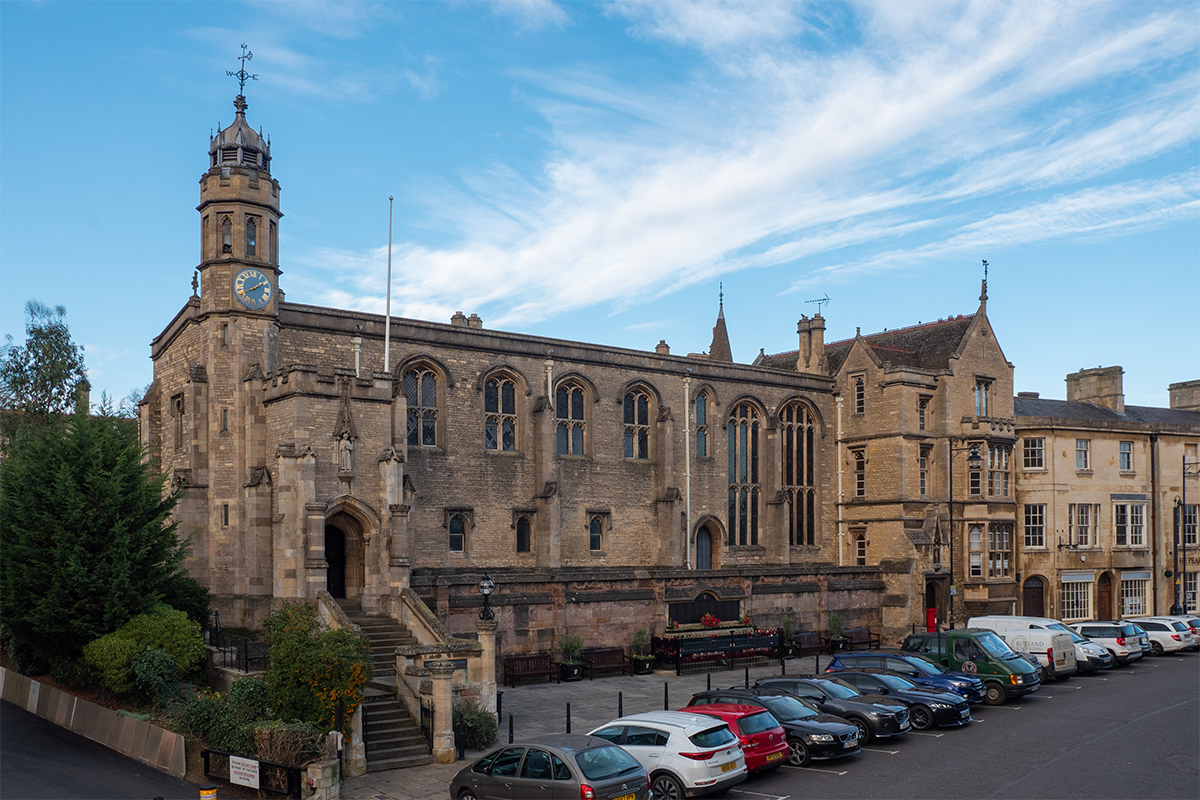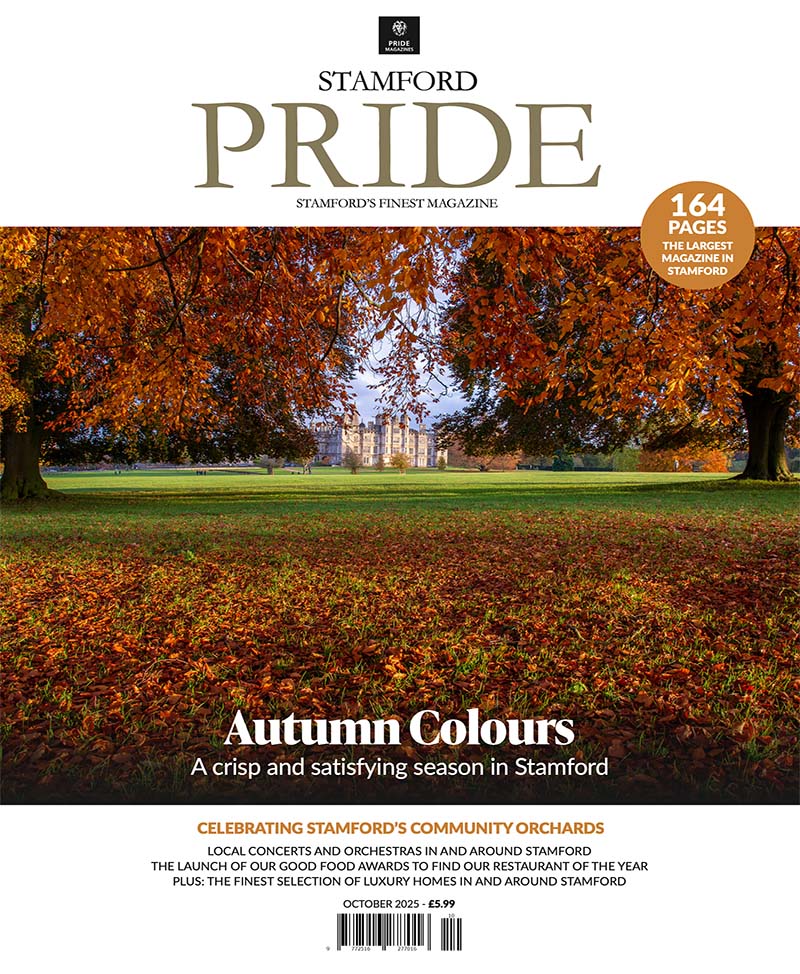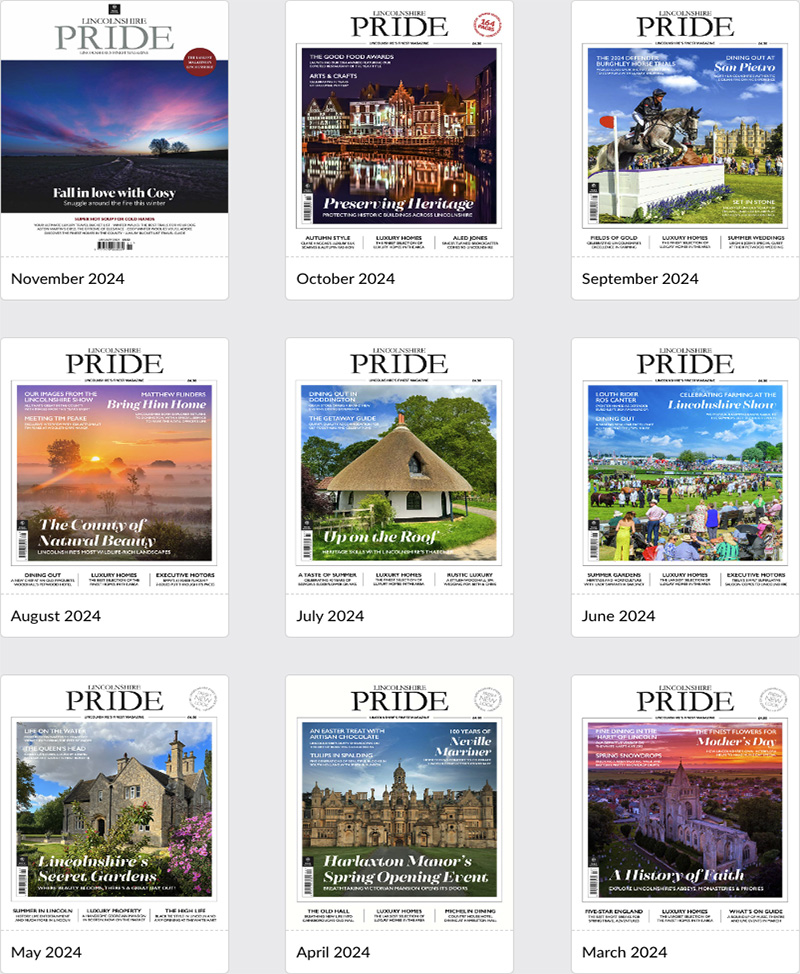
The History of Brown’s Hospital
This year represents 550 years since the founding of Browne’s Hospital on Stamford’s Broad Street. The almshouses are a Grade II* property founded by William and Margaret Brown with a letter patent granted by Richard III. Open to the public every Bank Holiday Monday and Saturdays from June to the end of September, the hospital and its almshouses offer a fascinating insight into Stamford’s history
One of Stamford’s best kept secrets, perhaps? Well, maybe not a secret. Let’s just say that Browne’s Hospital is such an established presence in the town that it’s easy to take it for granted.
Its ecclesiastical architecture gives the impression that the building is one of Stamford’s medieval churches, but although Browne’s Hospital does incorporate a chapel, it was created by its namesakes – the wealthy Stamford wool merchants William and Margaret Browne – as an estate of almshouses for 10 poor men and two poor women in 1475 and was also home for the Guild of All Saints, of which Browne was an alderman.
Today it’s still used for the purposes of providing almshouse accommodation, but even locals will be forgiven for not realising that Browne’s Hospital is open to the public either from private tours or for everyone on Bank Holidays Mondays and Saturdays from June to the end of September.
David Wallington is one of the trustees who cares for the property and is responsible for maintaining the Grade II* building’s fabric… which is no small undertaking.
“William and Margaret established Browne’s Hospital and funded it themselves,” says David. “They lived next door and the buildings they created served both as a guild hall and almshouse. In 1548 guilds were abolished and room above the dormitory became the Audit Room for the almshouse where the Warden would present the financial accounts to the Vicar of All Saints and the Dean of Stamford for their approval.”
“Wanting to ensure the building would continue to provide for those in need, William applied by Letters Patent to the King to incorporate the almshouse – in effect creating a charity – to cover the 12 poor people in addition to the two clergy running the almshouse: a Warden and his deputy, the Confrater.”
“Richard III awarded Browne’s Hospital a licence (often referred to as a charter) just before his death in 1485. In 1488 William gave half his estate (around 2,000 acres Stamford and its surrounding counties) to the building for its maintenance. This land was all sold at the beginning of the 20th century and the money invested at that time continues to ensure the future of the charity.
“William and Margaret died in 1489 and 1490 respectively, whereupon Margaret’s brother, Thomas Stokkes completed the foundation by obtaining a second licence from Henry VII and writing the statutes – or rules of the almshouse – which remained relevant until 1964. The last warden left in 1987.”
“Men lived in individual cubicles in a dormitory (the current Board Room) and this opened directly into the chapel where there was twice daily prayer. Worship in the chapel was obligatory until this time. The poor worshipped at All Saints on a Sunday.”
“The two women who shared a room elsewhere on the site served as nurses, whilst the Warden and Confrater also lived on site. Each of the poor received a small stipend out of which they bought their own food. We know the men had a blue cloak and in 1828 were given the uniform which remained in use until about 1960.”
By the middle of the 19th Century the site was suffering from dilapidation. Plans were even made to tear down all the buildings and build a new almshouse in its place.
In the end the original building facing Broad Street was retained and individual cottages built around a lawned area. The new Warden’s House was built on Broad Street but it is now rented out as office space.
More recently, a new Scheme of Management in 1964 was created and the almshouse was opened to both sexes and to married couples. The Hospital became responsible to the Charity Commission in 1854 when the first Scheme of Management was drawn up. Today, Browne’s Hospital belongs to the Almshouse Association to which the custodians turn for help with best practice and general advice.
“Sadly, we know little of those who lived in the Hospital over the centuries although they would have come, not only from Stamford, but surrounding villages. But one person stands out,” says David. “In 1857 William Ball celebrated his 100th birthday and the Warden, Revd Charles Nevinson, asked Elizabeth Higgins, who had a photograph establishment in Maiden Lane, to take his portrait which is now in the Hospital archive.”
“William even got an obituary in the Stamford Mercury when he died just short of his 104th birthday. It drew a veil over some of his exploits when a young man stated that William admitted committing every crime except murder!”
Today, Browne’s Hospital’s accommodation comprises 13 flats arranged around the cloister garden, each self-contained and with a lounge, kitchen, a bedroom and a bathroom.
In years gone by the criteria for accommodation within the Almshouses was based on poverty and religious commitment: being able to recite the Lord’s prayer and having led a ‘good life.’ Today the criteria is need.
However, David and the rest of the trustees would like to see more Stamford residents discovering for themselves the history of the building and its architecture, as well as the collection of antiquities within… for example, the ecclesiastical map of Lincolnshire showing the Saxon wapentakes which once divided up the area. Meanwhile two 16th century painted panels in the Audit Room which were cleaned and stabilised a couple of years ago.
Also on view is the oak-topped table dating back from 1583 and a massive iron-bound chest originally used to store the Foundation Documents and other precious possessions of the Hospital.
The latter was secured by three padlocks and could be opened only when the Warden, the Vicar of All Saints’ Church and one of the men were all present each with his own key. An additional item on display is the late medieval alms box which was used to collect money to distribute to the poor.
Another link to the building’s past at the bottom of the staircase is a brass plaque that dates back to 1497 and records the original creed of the hospital and the purposes behind the building’s foundation. It’s history of which the trustees are also keen to acknowledge.
“We’re proud to celebrate our 550th year with a number of events thought the year,” says David. “We are planning events ranging from Gilbert & Sullivan in the Common Room to historical re-enactments, such as a visit in May from Richard III who granted the first charter in 1485.”
“We hope that this year we’ll have a chance to offer tours and invite people into a building they might otherwise walk past each day, understanding more of its history and the effort that is required to ensure its survival for future generations. We would welcome more volunteers to ensure that the building remains open to visitors.”
For more information or to arrange a visit to Browne’s Hospital by appointment, see www.browneshospital.co.uk. To see more images, enjoy our feature in Stamford Pride’s March edition at






